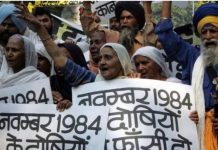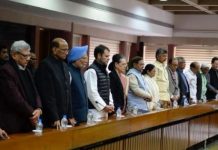
The FIFA World Cup 2018 that has begun in Russia generating a flurry of excitement is almost certain to be the most viewed event in the history of sports. For the host Russia, the tournament is an opportunity to showcase itself to the world its potential to hold such an event with perfection. During previous two Football World Cups held in 2010 and 2014 saw over 3.2 billion viewers glued to their television sets for each World Cup. This means almost half of the humanity watched the mega event making football the truly global sport and the World Cup as the biggest sporting festival. Even though our national team, ranks at number 97 and is not part of this carnival, the football fever has engulfed the young and old alike.
Globally, football fans would be riveted to a cocktail of euphoria and gloom matching with the win or loss over the next one month during 64 matches. The players would be seen in action in Russia, which hosts the World Cup across 11 cities. It is not only that the fans of the 32 teams participating teams in the World Cup would be the most engaged spectators but the passion would run riot even in non-participating countries.
Interestingly, the highest number of match tickets have been bought by the Americans who are not participating. India is among the top 20 countries in ticket sales. Over one lakh fans from China, also not part of the tournament, have moved to Russia to see the tournament. That is clear proof of popularity of football that transcends all barriers and is gaining in momentum and appeal.
The tournament promises to be quite engaging and worth watching in view of the suspense that this time no single team is a clear favourite to win the coveted trophy. Defending champions Germany are still but of late have not been performing to their potential. World Cup’s favourite child, Brazil, look rejuvenated but doubts remain about their recovery from the 7-1 hammering at the hands of Germany in the semifinals four years ago at home soil. Spain remains a force but are not as good as the dominating champions eight years ago. Spain has sacked its manager for signing on as manager of Real Madrid, the club powerhouse, and it remains to be seen what effects this move bears on their performance. France and Belgium boast a plethora of talent at all positions but the lack of balance and experience remain problems. Europe or South America, the two continents who have always shared the World Cup trophy appear to be in contention.
Messi and Cristiano Ronaldo, widely regarded as the greatest players of the modern era may per-haps be playing for the World Cup for the last time, and it would be safe to say that the fates of their nations rests on their able shoulders. Ronaldo will be aiming for a repeat of Portugal’s shock Euro 2016 win, and lead his seemingly ordinary group to glory. Likewise Argentina, runners-up in 2014, seem to overly depend on the magical Lionel Messi. If Messi comes fully fired up, and is handed some support from his perplexingly under performing but undeniably talented teammates, Argentina can be a force to be reckoned with. Argentina finished as runner-ups at the 2014 World Cup, and the 2015 and 2016 editions of the Copa America and in the last of those finals, Messi missed a penalty in the shootout, after which he announced his retirement but was persuaded to come back. Does Messi need a World Cup win to be considered among the best of all time or his greatness has already been established?
The mega sporting event throws focus on India as to why football has not been the mass sport like cricket. Unlike cricket, which was initially the preserve of the Britishers, football and hockey used to be the games of masses. In the ninteenth century, plenty of nonwhite football clubs had sprung up, including Mohun Bagan and the Trades Challenge Club. Football and hockey had pan India appeal and Calcutta had become football’s epicentre while a small village of Sansarpur in Punjab had become a nursery for hockey producing olympians. India dominated in 1951 and 1962 Asian Games and were placed fourth at the 1956 Olympics. Whether it was lack of focus by the sporting bodies or lacklustre appeal of the powers that be, thereafter, it was a steep decline.
The absence of private sponsorship, the lack of corporate help would appear to be another cause. Lack of infrastructure, failure of private sector backing led to non nurturing of football talent in India. Cricket by contrast flourished and became almost a religion.
The good news is that the younger generation is loving football and is poised to make India play at the FIFA World Cup in near future and our ranking coming within the 100, is a testimony that we are on the right track and we can pin hopes on a golden feat. Private clubs are opening up even in the countryside speaking volumes of the football mania gripping the length and breadth of the country. Corporate sector is also pitching in to promote football while public sector undertakings are recruiting football players and galvanising the sport. All said and done, it is time to support the participating teams in the true sportsmanship and savour the FIFA World Cup 2018.
The writer is a student at the DAV College, Chandigarh, who played for National School Games and Subroto Cup Football Tournament named after Indian Air Force Air Marshal Subroto Mukerjee.
letters@tehelka.com











